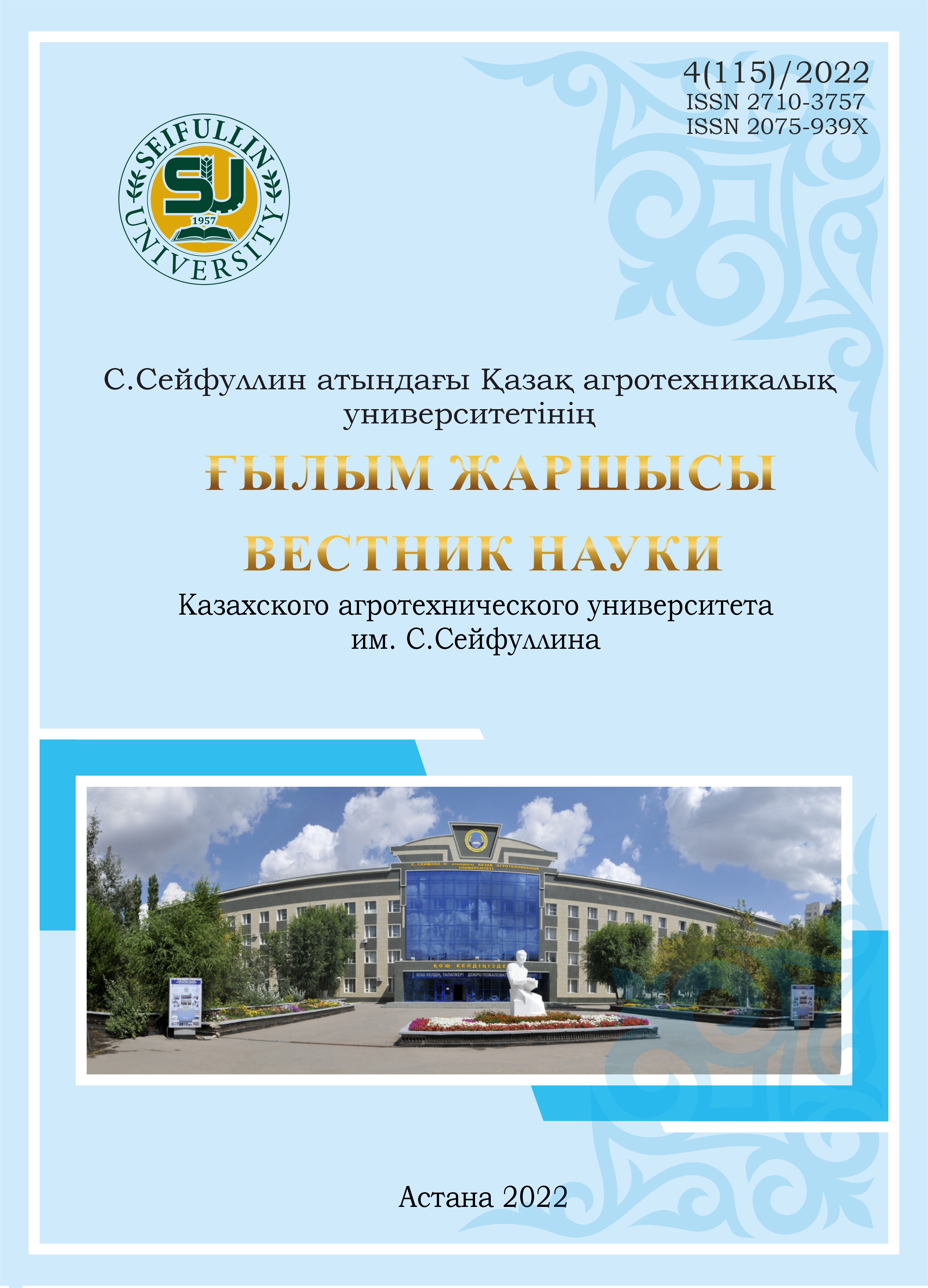DEPENDENCE OF THE VEGETATION PERIOD AND YIELD OF SPRING WHEAT ON THE TIME OF SOWING IN THE CONDITIONS OF A CHANGING CLIMATE
spring wheat; sowing time; productivity; agricultural technology of cultivation; phenological observations; ripeness group; development phase.
DOI:
https://doi.org/10.51452/kazatu.2022.4.1255Keywords:
spring wheat; sowing time; productivity; agricultural technology of cultivation; phenological observations; ripeness group; development phase.Abstract
In the complex of agrotechnical measures aimed at increasing the yield and gross harvest of spring wheat grain, sowing time is of paramount importance. The relevance of the study lies in the fact that in a changing climate, there is a shift in sowing dates to the third decade of May (the period May 25-30), although based on long term observations, the recommended sowing dates for the north of Kazakhstan are May 15-25. The object of the study are 7 new varieties of spring soft wheat of different types of maturation of domestic breeding: medium-early type - Astana, Teuelsizdik 20, Shortandinskaya 2012; mid-season - Semenovna, Shortandinskaya 2014, Taimas; middle-late - Aina. The essence of the study is to study the productivity, as well as the growth and development factors of wheat varieties of different ripeness groups, with the sowing dates: May 10, May 15, May 20, May 25, May 30, June 5, June 10. The work used laboratory and field research methods, according to current methods. Based on the results of assessing the duration of the development period for varieties of different ripeness groups, it can be said that the optimal sowing date in recent years has shifted to a late date, the period of May 25-30. At the same time, the varieties of the middle-early group are the most sensitive to the choice of the optimal period. The maximum yield of these varieties fell on May 30 - 21.6 centners per hectare, while the shortfall at an earlier date is 1.9 - 4.6 centners per hectare, and at later dates - 2.0 - 3.9 centners per hectare. The practical significance of the results of the study is expressed in the implementation of the results obtained in the agrotechnics of the cultivation of spring wheat of farms in the region, engaged in the cultivation of wheat of various ripeness groups within the farm. Only by observing the optimal sowing time it is possible to increase the increase in the yield of grain production up to 25 - 30%.

